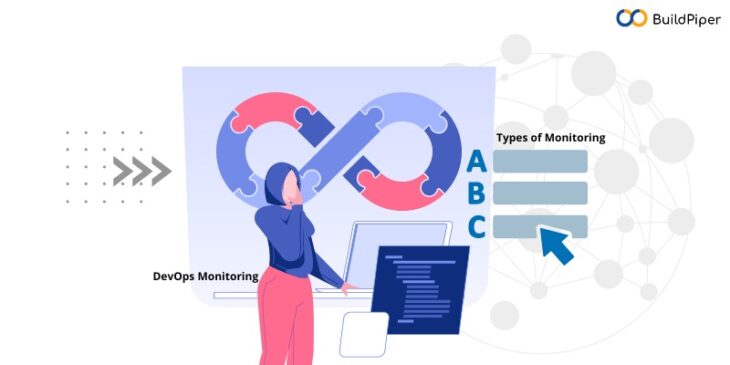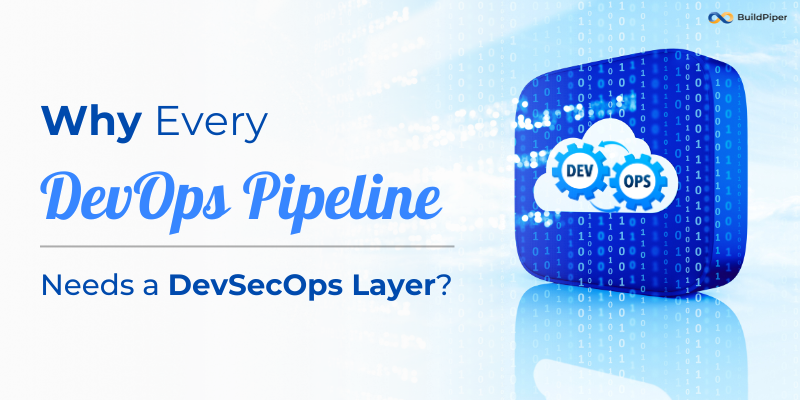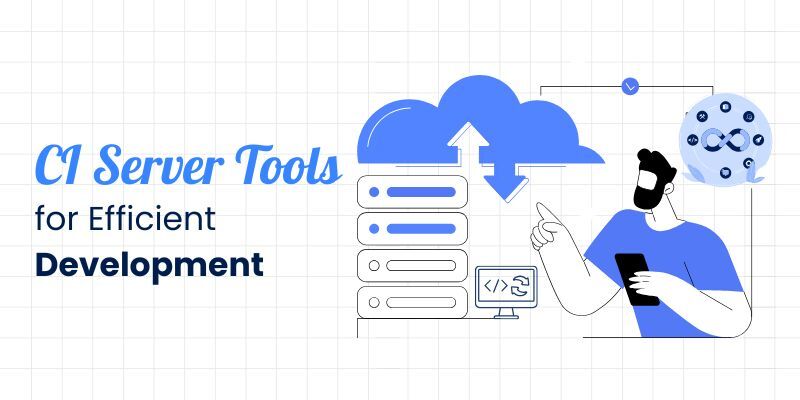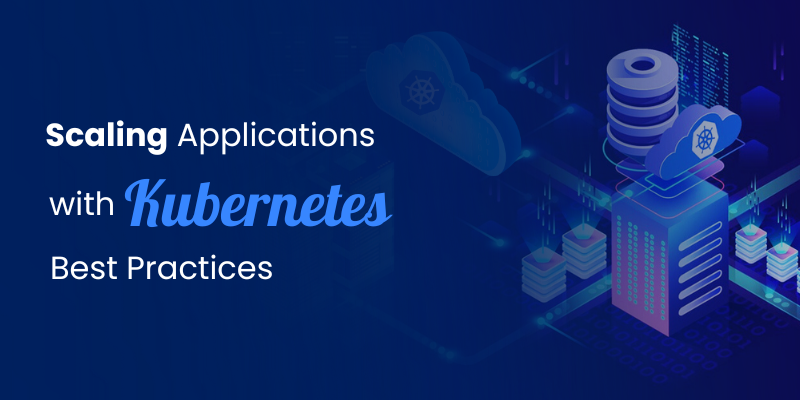
Due to multiple changes happening simultaneously in development and testing, the speed of the modern development lifecycle is faster than ever. With frequent code changes occurring often, development teams need detailed insights into the complete system so as to know what is actually happening. This is what DevOps monitoring does.
Monitoring in DevOps provides automation and visibility throughout the entire development lifecycle -right from development, integration and testing to the final deployment. It provides a comprehensive and real-time view of the production environment. In simpler words,
DevOps Monitoring is a crucial automation process in the development lifecycle. It aims to enhance system performance & user experience by identifying issues and providing a real-time status.
But, implementing a DevOps monitoring strategy requires a profound knowledge of the best practices, use cases, the right monitoring platform, and a robust toolchain. This blog provides detailed information on DevOps monitoring tools and strategies. We’ll talk about DevOps monitoring, different types of monitoring in DevOps, the best monitoring tools in DevOps, the benefits of monitoring in DevOps and much more.
Also, let’s explore the use cases and best practices in DevOps monitoring here, in detail.
Here, we’ll talk about:
- What is monitoring in DevOps?
- What are the different types of DevOps monitoring?
– Infrastructure Monitoring
– Application Monitoring
– Network Monitoring - Benefits of Monitoring in DevOps
Also, read in detail about,
What is DevOps Monitoring?
DevOps monitoring is the process of tracking and measuring the performance of IT systems, infrastructure, services and applications. The main aim is to alert and inform software development teams so that they can identify and resolve potential issues more quickly and in advance. Monitoring in DevOps encompasses overviewing the entire development process- right from planning, development, integration and testing, deployment, and operations.
It provides a complete and real-time view of the status of applications, services, and infrastructure in the production environment. Features such as real-time streaming, deployment analytics, build insights, pod status, historical trends in deployment, and visualizations are critical components of application and service monitoring.
DevOps monitoring solution or a collection of continuous monitoring tools gather data regarding,
- CPU utilization
- Response times
- Disk space
DevOps monitoring is a rapidly growing practice that is only set to grow. With the DevOps market alone forecast to exceed $20 billion by 2026, the need for monitoring is only going to increase worldwide.
DevOps monitoring is also referred to as Continuous Monitoring (CM) or Continuous Control Monitoring (CCM), but the core principle is the same.
Continuous monitoring or CM is a step that is implemented at the end of the DevOps process. The process informs and alerts the related teams about the issues and errors encountered during the production span. Once these issues are detected, they are resolved by the concerned teams.
Types of Monitoring in DevOps
DevOps monitoring is a vital automation procedure in the software development lifecycle. It aims to improve IT environments’ transparency, performance, and user experience. There are three types of DevOps monitoring strategies to monitor the hardware and software units, storage, servers, and so on. These are,
- Infrastructure Monitoring
- Application Performance Monitoring
- Network Monitoring
Let’s discuss these in detail.
Infrastructure Monitoring
Infrastructure monitoring handles the complete infrastructure and its components. The process involves real-time monitoring and tracking of the computer systems, servers, processes and equipment that make up the computing network of an enterprise. Infrastructure monitoring tools collect information from varied IT components, including software and hardware units, virtual machines, data centers, networks, disk storage etc.
The infrastructure monitoring tools ‘supervise’ and monitor the computing network environment. This helps IT teams identify and address any resource or performance issues more effectively and in advance.
An effective Infrastructure monitoring tool must be able to perform the following responsibilities:
- Infrastructure monitoring tools for DevOps should observe and monitor a server’s availability.
- Infrastructure monitoring tools should be able to track CPU and disk usage to analyze issues hampering the performance of the setup.
- Infrastructure monitoring tools must display how reliable and resilient a system is by tracking and monitoring its runtime.
- An infrastructure monitoring tool must be able to track the response time of a system if and when an error occurs.
DevOps Tools for Infrastructure Monitoring: Nagios, Prometheus
Application Performance Monitoring (APM)
This type of continuous monitoring includes monitoring, analyzing and measuring the performance and availability of specific applications. Application performance monitoring tools mainly track metrics such as,
- API responses and transactions
- System responses
- Real-user monitoring (RUM)
Application performance monitoring allows teams to identify and resolve issues before they affect the performance of applications. Application monitoring tools typically track API responses, transaction time and volume, system responses, and the overall well-being of the application.
An ideal Application monitoring platform should be able to:
- Offer native integration with tools being used in the development workflow.
- Provide access to real-time data for faster detection and removal of issues & bottlenecks.
- Improve & secure internal data communications and build robust security controls.
- Generate viewer-friendly reports and dashboards.
- Deliver historical trends of events and their correlation to identify hidden risks.
DevOps Tools for Application Monitoring: Datadog, Splunk, AppDynamics, New Relic
Network Monitoring
Network monitoring involves tracking the health and performance of a network and its connected components. Network monitoring tools help to identify network performance issues by assessing its critical components such as servers, switches, routers, firewalls and virtual machines. Network monitoring includes analysis and tracking of important metrics such as bandwidth, uptime (availability) and hardware failures. These metrics are conducive to measuring and correcting network issues.
Network monitoring comprises five processes which include- discovering, delineating, detecting, observing, and reporting. This way network monitoring helps IT systems to become proactive in finding flaws. Additionally, the process helps to optimize the performance and availability of the components being monitored.
Network monitoring tools in DevOps should efficiently handle the following tasks:
- These tools should monitor latency and the bandwidth of the server.
- Network monitoring tools for DevOps should be efficient in tracking the flow of packets in a network.
DevOps Tools for Network Monitoring: Wireshark, NMap- Network Mapper
Download our eBook: “The Comprehensive Guide to Microservices” NOW!
Benefits of Monitoring in DevOps
Let’s take a look at some of the significant benefits of implementing best practices in DevOps monitoring.
- Better Security: Continuous monitoring provides teams with a broad spectrum of visibility throughout the environment. This helps in identifying inconsistencies and triggering events that can lead to security failures. Knowing about the security threats in advance and responding to them faster is made possible because of continuous monitoring.
- Performance issues are detected earlier: DevOps monitoring is flexible in its entrance into the software development cycle. Traditionally, DevOps monitoring is introduced in the production phase. Initiating it in the staging and testing environments can help determine performance inconsistencies much ahead of time which can help in faster and more stable releases.
- Improves visibility for Constant Code Changes: With the adoption of CI/CD, the complexity of a production environment has increased. This is because CI/CD enables developers to make frequent changes to their code. Moreover, micro-services and micro frontends have introduced thousands of moving parts in the workflow. This requires complete visibility of each and every part of the system in order to fix issues and bugs in real-time.
- Enables implementation of Shift-Left Testing: Shift-left testing helps in improving quality, reducing test cycles, and decreasing errors when performed at the beginning of the lifecycle. Early monitoring enables DevOps teams to assess how the application behaves which is crucial for maintaining the performance and availability before the application is deployed in production.
BuildPiper, a popular Kubernetes & Microservices application delivery platform, is an ideal DevOps monitoring platform. The product renders complete visibility of the deployment status with in-depth reporting on the reasons for failure thus enabling a secured, quick and seamless Microservices deployment. With BuildPiper, DevOps teams can get complete visibility of the deployment status and the pod status after service deployment.
Other important features of the platform include,
- JIRA Integration with CI/CD Pipeline
- Out-of-the-box setup and support for Kiali and Jaeger.
Contact our experts to know more about the other interesting features of this platform!



